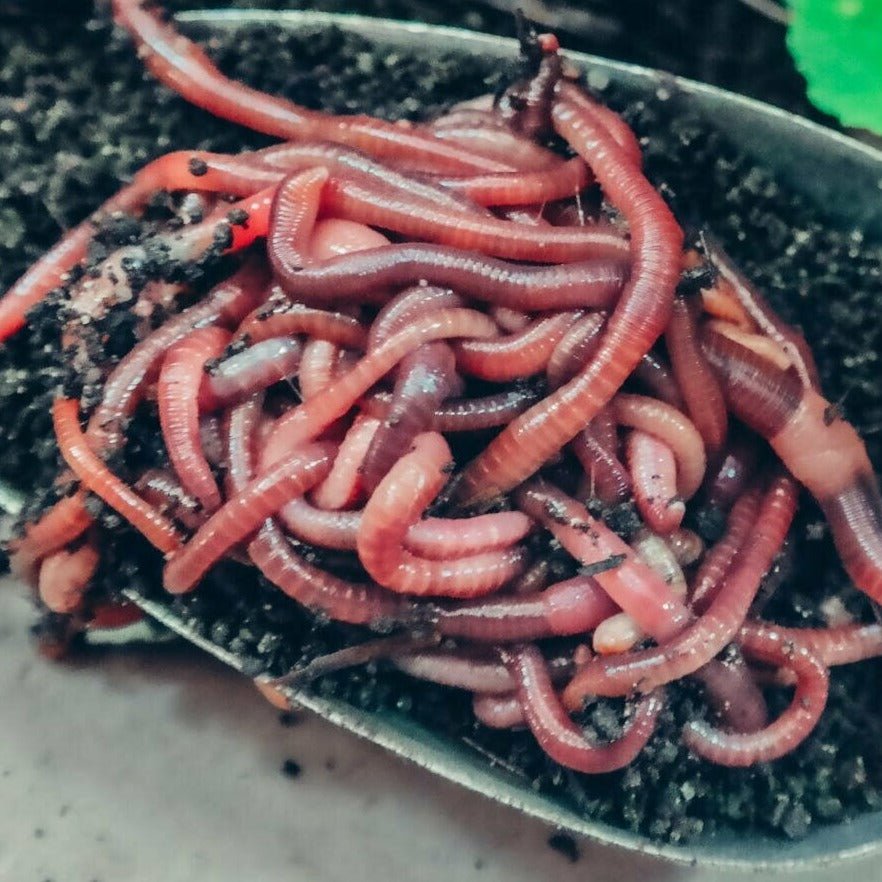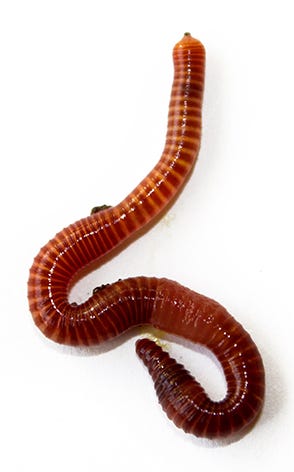Optimizing the Conveniences of Red Wiggler Worms: A Comprehensive Handbook for Home Gardeners and Urban Farmers
In the world of lasting gardening techniques, red wiggler worms stand as unrecognized heroes, quietly transforming organic waste right into nutrient-rich castings that can function wonders for dirt health. As home gardeners and city farmers progressively look for cost-effective and environmentally friendly methods to boost their gardens, the potential benefits of utilizing the power of red wigglers can not be overstated. From minimizing kitchen area waste to cultivating healthier plants, the usage of these modest creatures offers a plethora of benefits. By exploring the complexities of just how to successfully care for and make the most of the benefits of red wiggler worms, individuals can unlock a wide range of chances for boosting the sustainability and efficiency of their horticulture undertakings.
Recognizing Red Wiggler Worms
Red Wiggler worms, renowned for their efficient composting abilities, are a species of earthworms commonly made use of in vermiculture practices. These worms, clinically known as Eisenia fetida, flourish in decaying natural material, making them suitable prospects for composting.
One secret characteristic of Red Wiggler worms is their reproductive price. These hermaphroditic creatures possess both female and male reproductive organs, enabling them to replicate quickly under beneficial conditions. A fully grown Red Wiggler can produce multiple offspring in a brief duration, making sure a constant populace within a composting system.

Establishing a Worm Bin
When developing a worm bin for vermiculture purposes, correct prep work and attention to detail are essential for producing a conducive atmosphere for Red Wiggler worms. Begin by choosing an appropriate container for your worm container. This can be a plastic or wood container with a lid to keep wetness levels and safeguard the worms from light. Make certain that the bin has drainage holes at the base to stop waterlogging.

Location the worm container in an awesome, dark location away from direct sunlight and severe temperatures. By following these actions, you can establish up a thriving worm container that will efficiently process natural waste into nutrient-rich vermicompost for your yard.
Feeding and Maintaining Worms
Ensuring a nourishing and well balanced diet regimen is important for the health and wellness and performance of Red Wiggler worms in a vermiculture system. Red Wigglers are voracious eaters, efficient in consuming their own body weight in natural matter daily. To preserve a flourishing worm populace, it is vital to supply them with a range of food scraps such as vegetables and fruit peels, coffee premises, tea bags, and crushed eggshells. It is important to stay clear of feeding them citrus fruits, onions, garlic, dairy items, meat, and oily foods as these can be hazardous to the worms or cause unpleasant odors in Web Site the bin.
Proper dampness degrees are additionally vital for the well-being of Red Wiggler worms. The bed linen ought to feel like a damp sponge, supplying sufficient moisture for the worms to breathe through their skin. On a regular basis check the dampness degrees and readjust by adding water or completely dry bed linen material as needed. Furthermore, preserving appropriate temperature problems between 55-77 ° F(13-25 ° C )will guarantee optimal worm activity and recreation. By diligently monitoring click this site their diet plan, moisture, and ecological problems, home gardeners and metropolitan farmers can sustain a productive and healthy Red Wiggler worm populace for composting functions.
Gathering Worm Castings
To successfully remove nutrient-rich worm castings from the vermicompost, a systematic harvesting procedure is necessary for taking full advantage of the composting advantages. The initial action in gathering worm castings is to encourage the worms to move to one side of the bin.
After the spreadings have been gathered, it is crucial to divide any type of staying worms from the castings to prevent hurting them during storage or application. One reliable technique is to create conical stacks of castings under bright light. Worms will intuitively move far from the light, enabling simple separation and removal.
Last but not least, the gathered worm castings need to be saved in a trendy, dark, and dry area to maintain their quality and efficiency as a nutrient-rich dirt modification. By complying with these steps, home garden enthusiasts and metropolitan farmers can maximize the benefits of red wiggler worms in their vermicomposting systems.
Utilizing Worm Castings in Horticulture
The unification of nutrient-rich worm spreadings right into yard dirt can considerably improve plant growth and overall soil wellness. Worm spreadings, also called vermicast, are a natural fertilizer created by red wiggler worms as they break down natural issue. These spreadings are rich in vital nutrients like nitrogen, phosphorus, potassium, and advantageous microbes that advertise plant development and boost soil framework.
When making use of worm spreadings in gardening, it is important to mix them extensively into the soil or utilize news them as a leading dressing around plants. The slow-release nature of worm spreadings makes sure a steady supply of nutrients to plants with time, reducing the threat of nutrient leaching and promoting long-lasting dirt fertility. In addition, worm spreadings assist enhance dirt aeration, water retention, and microbial task, producing a healthy and balanced atmosphere for plant origins to prosper.

Final Thought
In verdict, the usage of red wiggler worms in home horticulture and urban farming can substantially benefit dirt wellness and plant growth. By comprehending exactly how to establish up and maintain a worm container, feed the worms effectively, and gather their nutrient-rich spreadings, gardeners can optimize the advantages of these earthworms.
In the realm of sustainable gardening techniques, red wiggler worms stand as unhonored heroes, quietly changing organic waste right into nutrient-rich castings that can work wonders for soil health and wellness.When developing a worm container for vermiculture purposes, correct preparation and attention to information are vital for producing a conducive atmosphere for Red Wiggler worms. The first action in collecting worm castings is to motivate the worms to move to one side of the bin. Worm spreadings, also understood as vermicast, are an all-natural fertilizer produced by red wiggler worms as they break down organic matter. By understanding how to set up and preserve a worm bin, feed the worms effectively, and harvest their nutrient-rich castings, garden enthusiasts can optimize the advantages of these earthworms.